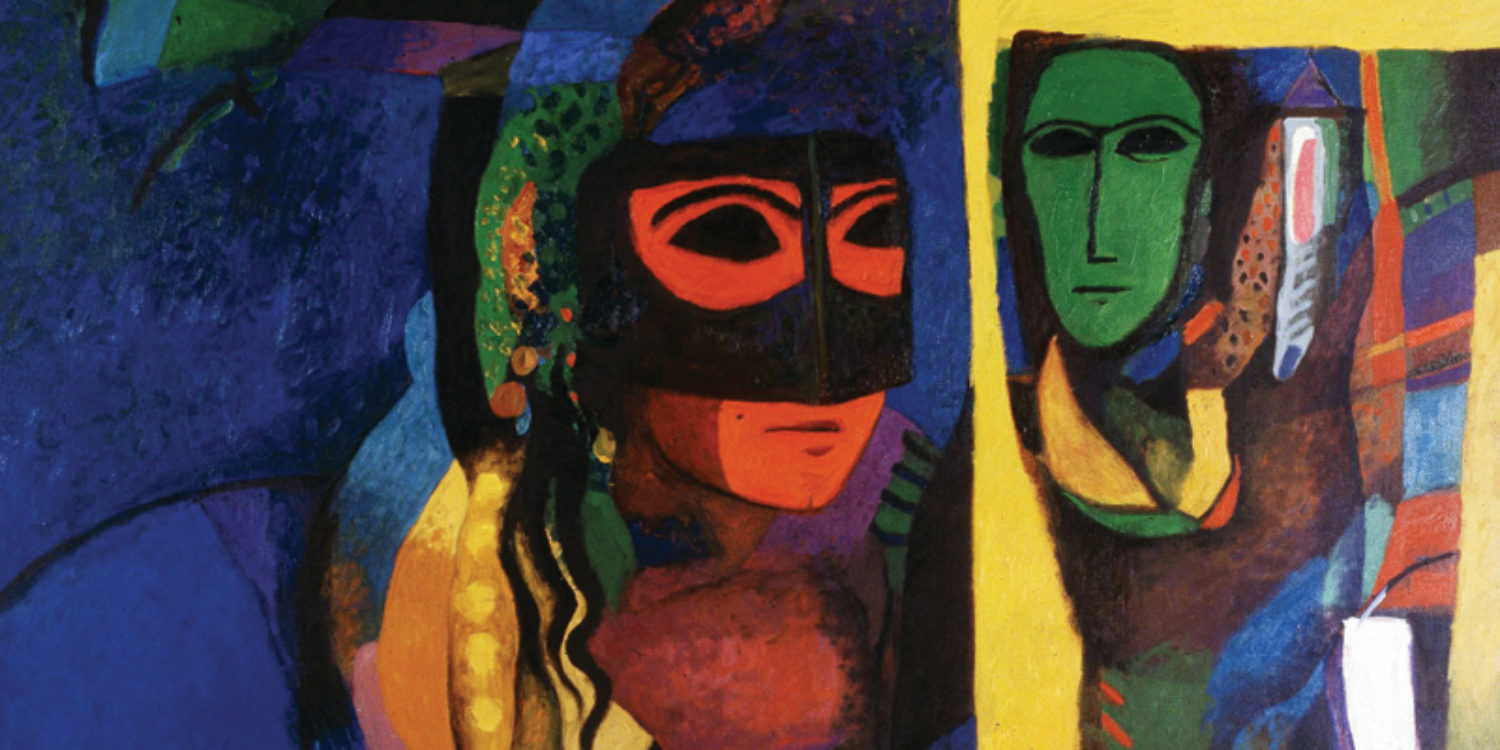The History of Modern Iraqi Art

This course ran in May 2023. We are considering releasing it as a “watch only” course in 2024. If you would be interested in accessing this, let us know by writing to info@arabbritishcentre.org.uk and we can keep you informed.
In this new introductory course on Iraqi art history led by Mysa Kafil-Hussain, we will explore the artistic roots and socio-political context of the development of modern Iraqi art. By looking chronologically at the artist groups and artists themselves, we see how a changing Iraq impacted generation after generation of local artists, and how their work reflected their realities either at home or as an artist in exile or in the diaspora. We then arrive to the contemporary, where we also look beyond canvases and clay and see how artists express their connection to their homeland or their explorations of identity and belonging through dafatir (book art), video art, photography, installations and much more.
Classes will be held on Zoom and will be recorded.
Image credit: Dia Azzawi, Majnun Layla (Layla and Majnun) No. 2, 1995, Acrylic on canvas, 161 x 200 cm, Collection of Mathaf: Arab Museum of Modern Art, Doha. Permission for use granted by the artist.
Class 1: Introduction to Iraqi Art
A brief overview of ancient and Islamic art in Iraq and a look at the historical context of the country in the lead up to the 20th Century. We will then explore the early 20th Century, including the first generations of modern artists, Ottoman-trained painters & the Art Friends Society. Artists include Abdul Qadir al-Rassam, Mohammed “Hajji” Selim, Akram Shukri and more.
Class 2: Finding a local language – The Pioneers, the Impressionists & the Baghdad Group for Modern Art
Exploring the artist collectives and the artists within them who established themselves both nationally and internationally in the eventful 1950s, the decade Iraq went from a kingdom to a republic. Artists covered include Faeq Hassan, Hafidh Al Druby, Jewad Selim, Shakir Hassan Al Said, Ismael Al Sheikhly and many more.
Class 3: The 1960s – Politics meets Art
We look at the Nasb al-Hurriyah and the fate of Jewad Selim, the establishment of the National Museum of Modern Art, how communism found its way into Iraqi art, the beginnings of modern Iraqi graphic art, and the formation of the New Vision group. Beyond Jewad Selim, we will also look at the work of Kadhim Haydar, Mahmoud Sabri, Lorna Selim, Hashim Samarchi, Rafa al-Nasiri, Dia al-Azzawi, Nouri al-Rawi, and many others.
Class 4: The remains of Pan-Arabism, solidarity with Palestine & a changing Iraq
We will study the formation of regional art festivals including the 1972 al-Wasiti Festival, the First Arab Biennale in 1974 and the Baghdad International Poster Exhibition in 1979, as well as artists representing Iraq for the first time at the Venice Biennale in 1976. We also explore Shakir Hassan’s ‘One Dimension’ movement, how solidarity with Palestine impacted the work of Iraqi artists, and the rise of Saddam Hussein. Artists covered include Dia al-Azzawi, Madiha Omar, Mohammed Ghani Hikmat, Ismail Fattah and others.
Class 5: The 1980s-1990s – Authoritarianism and the Gulf War at home and abroad
In this class, we will discuss how Iraqi artists were developing and exhibiting their work abroad, and how, back home, artists had to work within a harsh political system which often forced them into the production of propaganda. We also look at the impact of the Gulf War, and how artists worked throughout the war and sanctions. Artists covered include Nuha al-Radi, Hanaa Malallah, Ala Bashir, Ismail Fattah, Afifa Aleiby, and Suad and Layla al-Attar.
Class 6: Contemporary Iraqi Art – 2003 until the present day
In the final class, we look at how Iraqi artists reacted to the 2003 invasion and the years of conflict which followed, from large-scale paintings to pocket-sized dafatir (artist books), and including video art and installations. We come to the present day, where artists and photographers respond to the 2019 October Revolution, the COVID-19 pandemic, questions of memory, identity and belonging, and much more. Artists include Mahmoud Obaidi, Himat M. Ali, Ghassan Ghaib, Nazar Yahya, Amar Dawod, Sadik Kwaish Alfraji, Michael Rakowitz, Rand Abdul Jabbar, Hayv Kahraman and many others.
Optional class trip in June for those based in the UK: ‘Dia al-Azzawi – Painting Poetry’, Ashmolean Museum, Oxford. Date TBC.
Mysa Kafil-Hussain is the Archive and Library Manager at the artist studio of Dia al-Azzawi in London, and also a freelance art researcher and writer focused on modern Arab art. Mysa studied Arabic & History at the School of Oriental and African Studies (SOAS), where she also later did her Masters in the History of Art & Architecture of the Islamic Middle East. She has been published numerous times in recent years on the topics of Iraqi and Arab art and photography.
